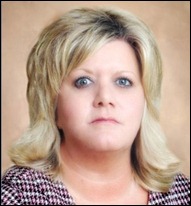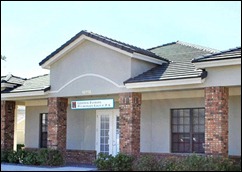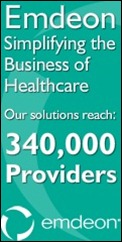A few weeks ago, I asked Practice Fusion to provide clarification on their number of users. They were forthcoming, and initially provided this response:
- We currently have a bit over 50,000 users and 5 million patients on the system.
- About 40% of those are MD/DO level users.
- The remaining 60% are in the NP/PA, nurse and staff categories.
- We bring on 200 new users each day and 500,000 patients are uploaded to the system each month.
- The list is regularly scrubbed of accounts that match specific inactivity criteria.
- We track activity level closely based on a couple different metrics. Mostly how many patients they have imported to their account and how many charts they’re pulling. We would be able to see that they were inactive because there weren’t any chart pulls. When account is scrubbed from our system for inactivity or by request, we don’t count their patients in our stats.
This information led to more questions. I spoke to Ryan Howard, CEO and chairman of Practice Fusion of San Francisco, CA.

I had sent over a number of questions and understand that you actually wanted to go over the questions over the phone rather than e-mail. Do you have those?
I don’t have them in front of me. We can definitely go through them. The net is that I did see them, so I am familiar with what you are talking about, and more than happy to answer questions.
I’ll be really transparent. With sharing our numbers, there’s going to be a balance of (1) my ability to run my business, and some things are strictly confidential, and (2) what’s standard in the sector. Some of your questions definitely dug deep and, I mean, I would just push back and say, “Of those questions for each of our competitors, what do you know?” This level of detail isn’t commonly shared, so, what I’m asking in advance is to take that you into consideration. I’ll give you what’s appropriate. We’ll dig a little deeper than I usually would.
Sure. I guess the biggest two areas of questions really have to do with the number of providers using the system and number of providers getting on. And based on some of the information you had sent over, the numbers just didn’t add up for me, so I just wanted to get a handle on that. The numbers I was given said about 40% of your users are MDs or DOs, which doing the math, I would say equates to about 20,000; and that you’re bringing on a total of about 200 new users a day; in other words, about 80 new providers a day. I was just trying to understand if my math was correct. If you back out 80 new providers a day, the numbers suggest that you’re adding 29,000 new providers a year, which doesn’t quite sound right if you only have 20,000 total providers. I’m just trying to get a feel for the actual number of doctors today and how many are being added. And then, how do you actually count a provider? Are they actively using the system and how is that math done?
What you need to keep in mind is the cadence of our growth has changed over time. From a static perspective, Practice Fusion is currently bringing on about 200 users a day. It’s a little over that. Now about six months ago, we weren’t, though, right? Or a year ago we weren’t. So our velocity is faster at any given time. If you look at our growth curve, it kind of looks like a sloped hockey stick.
In 2010, we had around 500% growth on the physician side and on the patient side and on the volume side. Through our platform, we see about 1.3 million patients a month. That specifically means that doctors and practitioners on the system are seeing and pulling 1.3 million patient charts a month.
OK.
The net is that the data is accurate. I stand by those numbers, they’re right. Six months ago we were probably bringing on 100 users. Right now it’s more like 230 users a day to 250.
And a “user” means they’re actively going in, documenting charts, that type of thing? They’re not just loading it on there and testing it out?
There’s always a long tail of users testing the system that aren’t officially active. We only count an active user as a user that is actually seeing a specific benchmark of patients.
One of the things that’s interesting is that we know historically that two-thirds of all enterprise installations just fail. There’s a safe assumption that two-thirds of what other Big Iron vendors say about their user numbers is inaccurate. There are systems that have been abandoned, there’s been attrition, or users didn’t have successful implementations.
Because Practice Fusion has one Web-based, SaaS-based platform, I can pinpoint instantly how many users we have in our system. Internally, we have reports that the system outputs every single day and we know how many users were on Thanksgiving Day, how many users are on right now, and no one else — not many other guys — can do that.
The other thing I don’t talk about a lot is that we decommission any account that hasn’t been active within six months. There are rules around that in the system and there are some exceptions – we don’t just lock away an account that might be activated. For the sake of having sound data around the metrics, we have a process where, let’s say you logged in the system, you kicked the tires and you no longer wanted the system or you just didn’t use it, we would decommission your account. So our actual registered user number for this year is larger than what we reported. You have to factor in the decommissioned accounts. I would guess that takes a lot of the hyperbole out of the numbers for you.
Basically we left 2009 with 25,000 users. Forty percent of those guys were practitioners, so 10K practitioners, that sounds right off the top of my head. And then we’ll walk out of 2010 with about 60-65,000 total users, and again, we’ve maintained around that 40% number, so it’d be more like between the 24 and 28,000 practitioner number.
I was also looking at the number of patients. Do you have any feel for roughly how many patients a provider sees on a daily basis? Because, the numbers I received indicated something like a half a million patients being added per month, which is 16,500 patients per day; which came out to be about one new patient a day per provider. The math didn’t quite work there. I’m wondering if you have a feel for how many new patients a day a provider sees?
The numbers that we gave you were what was reported in our press release, that we’re currently adding about half a million patients to the system each month.
Right.
So I think again it kind of goes back to your original question. Our growth rate has not been consistent through the entire year; that is has increased significantly. So just to do a straight division on that doesn’t really make sense.
OK. About how long does it take do you think your average provider to get up and running live? What’s the average go-live time?
The go-live time is a little over a month right now, and we spend a lot of time on analysis to make sure that users are getting better at it. It generally depends on the user’s aptitude, but across the board, it’s about 30 days. It’s doing a go-live, it’s become fully active, it’s seeing 100 patients. That is our definition.
Seeing 100 patients?
There’s some different rationale around that number. Once the user has seen 100 patients, there’s a wide belief internally — based on analysis and product managers spending time with the users and our implementation team’s insight — that that user has mastered the system. They know it inside out. They don’t need any further training. The flip of that is that from the data side we know that the attrition rate at that point becomes single-digit percentage, so the user knows the system so well that they’re not just kicking the tires anymore because the data showed that.
And, if a provider wants to discontinue using the service, can they get an electronic version of all those patient records and any chart notes they’ve done?
So, if it’s only just inactive – they registered and they didn’t put any real data in the system – then we decommission them and then we give them a notification. Now, if someone has data in the EHR, we have a bunch of different methods for them to get their data out of the system. But if someone’s only put a few patients in, we generally will have a conversation with them and we’ll make sure that there’s no data in the system and we can export anything that has been entered. We can and we do export data, but my point is that generally a user who decides to leave hasn’t entered anything real because they are in the evaluation stage themselves.
Do patients’ charts stay on the system indefinitely? Do you ever take them off?
It’s a case-by-case scenario.
OK. One of the things I also noticed looking at your Web site is that your EHR is currently has modular certification as opposed to the complete certification. Are you helping clients get the additional programs they need to meet Meaningful Use requirements or do you anticipate getting full certification?
We’re 100% committed to full certification here at Practice Fusion. It’s listed all over our Web site and all of our users are up to date on that. So, modular certification for us is just the first step.
I know you’re privately held, but at what point do you anticipate the company will become profitable? I mean, with 500% growth, that’s pretty tremendous growth.
We don’t disclose any financial information, sorry. Unless you want to invest. And then if you want to invest, we can.
I have a spare million – I might.
Perfect. You’d be my best friend.
Good. Is there any other information on the company or what you’re doing that may be able to shed some light on your secret sauce and how you guys are operating?
We stand behind “what you see is what your get.” I think there’s a German philosopher that said… one of his old quotes was along the lines of, “All truths are violently opposed, ridiculed and then widely accepted as the truth.”
We’re doing something that’s counter-intuitive to the market, right? I mean the traditional EHRs that are available today, they’ve been there for 20 years. There’s nothing different, nothing innovative between Allscripts, eClinicalWorks, and almost any other vendor you look at.
What we do, again, is sort of counter-intuitive. It’s directly aligned with all the major initiatives today. All the data is in one central system. Data can be shared doctor to doctor real time. Patients can access the data very quickly in their own personal health record. The data can be queried; answers are within the data and the database. And what we’re doing is really unique on – not just the architectural model – on the business model as well and it’s incredibly progressive.
The sector is obviously upset by it, it’s disrupting the status quo and it’s real… I have more physician quotes – I can send you hundreds of quotes and hundreds of references. So the proof’s in the pudding. What other vendor can do that? I can literally share more people with you who are happy with us than any other vendor.
So, you and I can talk all we want, but I like let the community speak for me. It’s been a really incredible ride and we’re really excited about it and we think next year it’s going to be really, really interesting becoming the de facto standard.
Actually, I do have one other question. As a provider, is there anything I pay to Practice Fusion out-of-pocket other than if I want to have the version that doesn’t have the ads?
Nope. That’s it. It’s the philosophy on my side is to keep the product entirely free. As long as I’m leading the company, the product will always be free.
This may be a question you can’t answer, but how many providers, percentage-wise, take you up on the offer and actually are willing and able to pay for the no-ad versions?
[Laughing] We will never, ever tell that, sorry.
Never, ever, OK.
Never, ever, ever. It’s such a cute number, too. I told you you’d be captivated by it, but my background’s psychology. Human behavior’s great, and it’s just so telling. That one piece of data you can tell so much about the market, but I just can’t do it.














The article about Pediatric Associates in CA has a nugget with a potentially outsized impact: the implication that VFC vaccines…